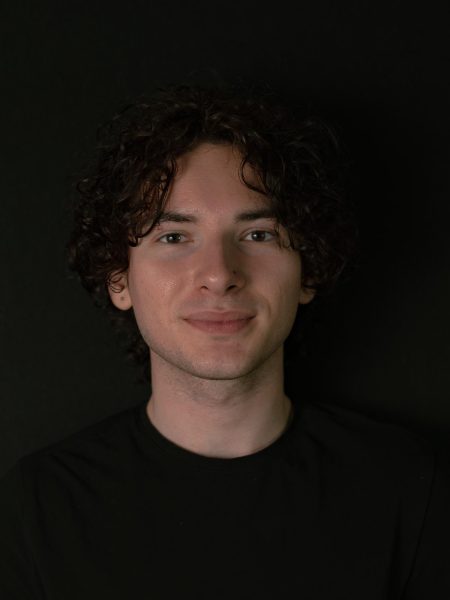Star Wars, Transformers, Planet of the Apes, Indiana Jones: Raiders of the Lost Ark and Pirates of the Caribbean. These are some of the titles that guest speakers Judy Elkins and Colin Campbell worked on as VFX artists in Hollywood, gladly sharing their career experiences and memories in conversation with Daniel Saldivar, professor of Visual Effects at UTSA. Saldivar had met them a year before thanks to the Visual Effects Society of Texas.
On Oct. 2, he invited Texas-raised Elkins and Campbell to talk about how they got their start in VFX, their inspirations, their experience working on the most recognizable movies in the history of blockbuster cinema and advice to younger filmmakers pursuing the craft.
Elkins — who most iconically worked on the Creature Shop for Star Wars: Episode IV Return of the Jedi, Raiders of the Lost Ark, and the Star Trek franchise, to name a few — reminisced about her start. Originally, she was studying to be an art teacher at UT Austin and later on began teaching at Rice University, where she fell in love with animation and camera lenses. It was at Rice where she decided film was the career path she had to take.
Campbell — known for his work in Transformers, Star Wars: Revenge of the Sith, and many other titles — shared his origins as well. Mainly inspired by his fascination with dinosaurs and the animation of Ray Harryhausen, Campbell stated that he always knew he wanted to do special effects. He enrolled at Trinity University in San Antonio to pursue said passion for film.
Saldivar asked them both about the risks they had to take to make it into the industry and any advice they have for future filmmakers. Both shared their experiences and struggles of having to move to Los Angeles working part-time jobs, handing out resumes and going to countless interviews until they finally got their jobs in the film industry.
“When you’re looking for the work, … you need to have a disposable job,” said Elkins. ‘Something that you can leave quickly, because a lot of times, it’s-it’s like, ‘Hey can you start tomorrow? Can you start next week?’” She insisted the audience learn about everything and “Be curious.”
“If you want to do [filmmaking], make sure there is nothing else that you would rather be doing. Go for it with all your heart.” Campbell continued, “Don’t be afraid to start small.”
After they shared their favorite memories of each film they worked on, it was time for the audience to ask questions. Both guests answered on whether it is most important to know about the technical portion of VFX or if creativity is enough to make it in the industry. Campbell stated that both are important elements to thrive in VFX, while Elkins insisted that knowing the technical part is more important.
The Paisano asked if filmmakers should learn how to do VFX the original way before jumping into the world of computers and CGI. Campbell answered, “It is good to know whose shoulders you’re sitting on when you do something digitally. It’s just the same process, but using different tools, but understanding how the old tools work may spark a neat idea how to solve a problem later on in the computer.”
The event ended in handshakes and pictures with film enthusiasts, becoming a memorable moment for UTSA’s film program and inspiring a new generation of filmmakers who hope to one day step into the shoes of these VFX pioneers.










